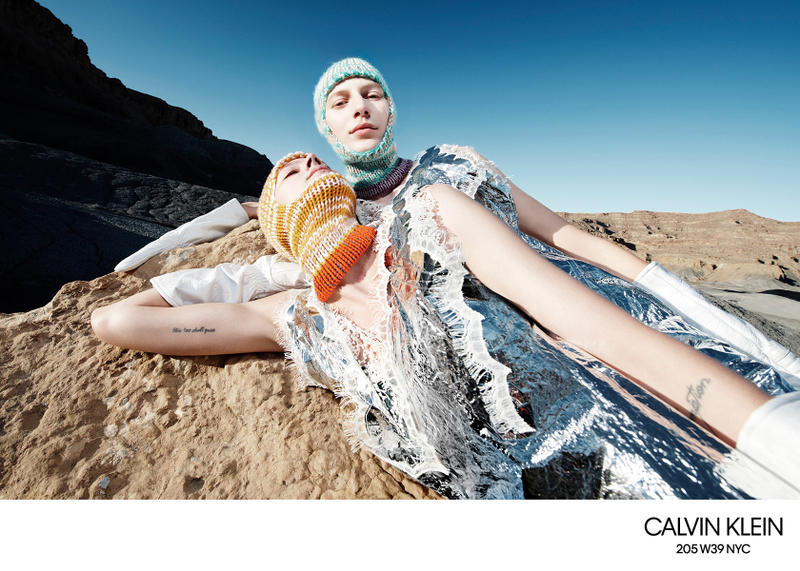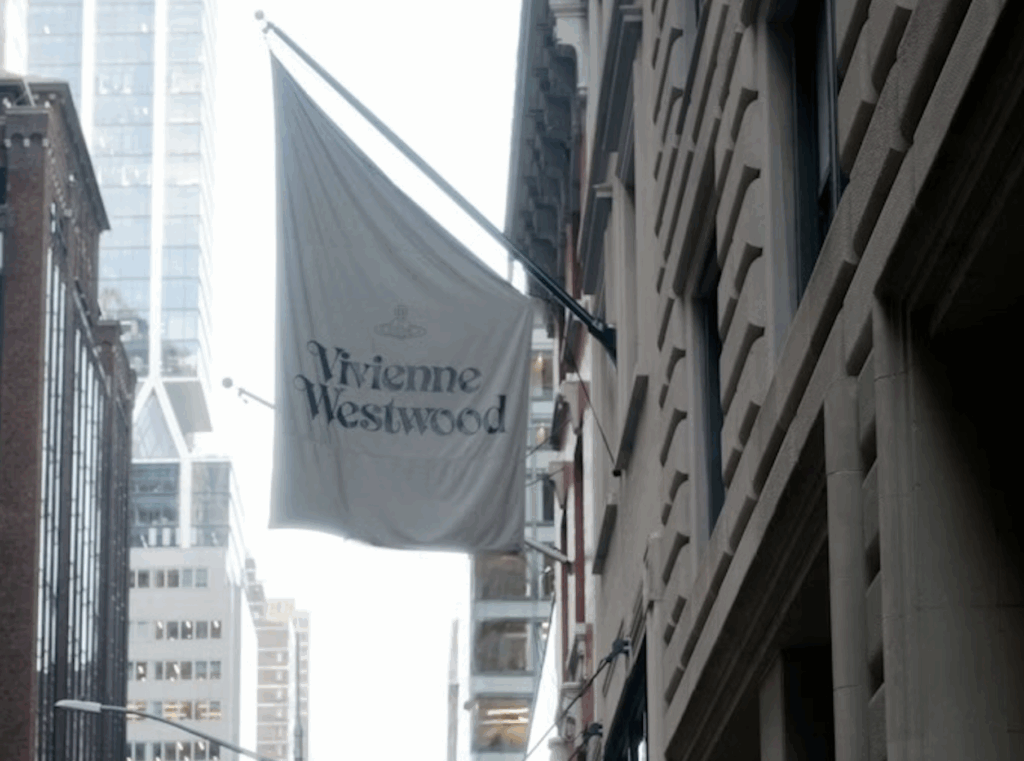There will be one less name on the New York Fashion Week calendar going forth. After abruptly parting ways with creative director Raf Simons late last year, Calvin Klein is said to be doing away with its runway collection altogether. The New York-based brand “will be closing its Calvin Klein Collection business,” the runway line rebranded to Calvin Klein 205W39NYC during Simons’ 2-year tenure, according to the New York Post. “In light of the closure, Calvin Klein will be eliminating [roughly 100] employees who worked in that division.”
The report comes amidst lingering rumblings at Calvin Klein, one of America’s few longstanding fashion establishments. In November, at least one executive at Calvin Klein’s corporate parent PVH took the industry by surprise by very publicly expressing frustration with the state of things. “We are disappointed by the lack of return on our investments in our Calvin Klein 205W39NYC halo business,” Emanuel Chirico, CEO of PVH, said in November. It was nothing if not a direct hit at Simons and potentially, runway fashion more generally.
205W39NYC was the runway collection that was rebranded under the watch of Simons, the European fashion design god appointed to the helm of Calvin Klein in August 2016, in place of Francesco Costa and Italo Zucchelli, who had respectively designed Calvin Klein’s womenswear and menswear. The hope was that Simons would enable the 50-year old American brand to regain some of its diminished fashion relevance, which it could use to justify the premium(ish) positioning of its core offerings: jeans, undergarments, fragrances, etc.
The partnership would turn out to be fleeting, with the parties parting ways just over two years later, eight months short of the end of Simons’ 3-year contract, one that gave him “extraordinarily sweeping creative powers, not only over the company fashions but also over its entire branding process, including advertising campaigns,” Christina Binkley noted in a recent article for the Los Angeles.
Trouble had been brewing. While Simons’ 205W39NYC collection found favor amongst fashion industry insiders, with its luxurious fabrications and experimental themes, the runway wares and Simons’ newly-relaunched Calvin Klein Jeans segment were “too elevated and too fashion-forward for our core consumer,” per PVH. The average Calvin Klein consumer favored the brand for its affordable, mainstream products, not the expensive makeshift construction gear, complete with reflective stripes, plastic covered fur coats, and eye-catching band uniform wares that Simons was peddling.
PVH – the 137-year old American apparel conglomerate that brought Calvin Klein under its umbrella in 2002, where it joined Tommy Hilfiger and Izod, and licenses for BCBG, Kenneth, Michael Kors, and Speedo – was displeased when sales were lower than they had anticipated and when the brand’s earnings fell to $121 million for the third quarter of 2018, from $142 million a year earlier,” Reuters revealed at the time. As a result of “weakness in its Calvin Klein business,” PVH missed Wall Street estimates for the first time in at least two years.
All the while, things had begun to unravel behind the scenes. Binkley revealed last month that “as stores began cutting orders [for Simons’ designs] and positioning the brand in fewer doors,” Calvin Klein started “shifting responsibilities away from Simons, including advertising and store design,” thereby prompting Simons’ legal counsel to call foul. Within a month, “less than a week before Christmas, Calvin Klein and Simons jointly announced they were parting ways.” Calvin Klein had “decided on a new brand direction which differs from Simons’ creative vision.”
Initially it appeared as though Calvin Klein was simply looking to swap out Simons for another name. Early this year, the company’s CEO Steve Shiffman revealed that Calvin Klein would relaunch the KLEIN 205W39NYC business “under a new name, design approach and creative direction.” But the latest news, of course, confirms otherwise, and with it, the question of whether Calvin Klein needs a ready-to-wear line at all has been asked and answered.
PVH, a license-centric apparel giant, as distinct from a fashion house, certainly seems to believe it doesn’t, and from a purely bottom line perspective, it probably doesn’t. As Scott Shane revealed in his 2017 book, “Licensing Myths and Mastery,” about 90 percent of the $160 million a year in sales at Calvin Klein Inc. comes from licensing the brand name to makers of underwear, jeans and perfume.
In Calvin’s case, that licensing relationship is primarily with G-III apparel, the New York-based wholesaler that manufactures a wide variety of garments and accessories under the Calvin Klein name, as well as for DKNY, Tommy Hilfiger, Guess, Ivanka Trump, and Jessica Simpson, among others.
The more affordable, more accessible Calvin Klein wares that G-III products are distinct from the “Calvin Klein Collection” or more recently, the 205W39NYC line. Most of them are designed, manufactured, and distributed by an entirely different company (G-III), and sold in entirely different stores (Dillards and Macy’s vs. FarFetch and Bergdorfs) than the runway “Collection” was, but chances are, the average consumer is none the wiser and that was the point.
Calvin Klein’s runway “Collection” forays were serving almost exclusively to drum up media attention and fashion-prestige to enable the brand to position and sell its lower-cost, licensed goods, such as the underwear that Kardashian/Jenners wore in for a recent ad campaign or the fragrances that first propelled the CK brand back in the 90’s, and enable consumers to believe that they were buying into the upscale, fashion-centric Calvin Klein brand.
This is not a new model. In fact, it is not terribly unlike how almost all established fashion houses work. Chanel, for example, stages large-scale runway shows in an attempt to sell its quilted leather bags, licensed eyewear, and a plethora of beauty products and fragrances. As Bloomberg reported a couple of years ago, “Louis Vuitton knows fashion is a money pit and yet, keeps throwing money in it.” The publication’s Robert Williams and Carol Matlack wrote, “Producing collections and staging ever more glamorous shows tends to wipe out profit for pricey clothing.” But those very endeavors are what allow Louis Vuitton, Chanel and similarly situated brands, to sell other things, whether it be leather goods, very-commercialized garments, or fragrances.
This decades-old ready-to-wear + runway model may still be working for corporatized brands even if those brands are famously writing off the runway show and relatively small numbers of apparel sold as marketing expenses. Unlike Louis Vuitton and Chanel, though, which have to be able to justify their practice of affixing multi-thousand dollar price tags to bags, something they can do based on the image/aura of luxury they perpetuate by staging runway shows complete with garments that usually never make it too much further than magazine covers, red carpets, and the closets of 0.001 percent each year, the bar is much lower for Calvin Klein. It is not selling pricey leather goods; it is in the business of underwear and jeans.
Still yet, Calvin’s do-away with the runway move might be one of the most obvious signs that times are undeniably changing. In the age of Instagram, when a celebrity or other influencer can drum up hundreds of thousands or even millions of impressions in mere minutes and at a far more cost efficient rate than previously popular marketing efforts, such as ready-to-wear collections, maybe the traditional runway is no longer just impractical (something we already knew), but no longer makes sense from a marketing perspective at all.
In other words, maybe it is a trend that has run its course right along with the fading allure of athleisure. That is a proposition that Calvin Klein seems to be willing to bet its money on. The question we are left with: will other brands follow suit?














